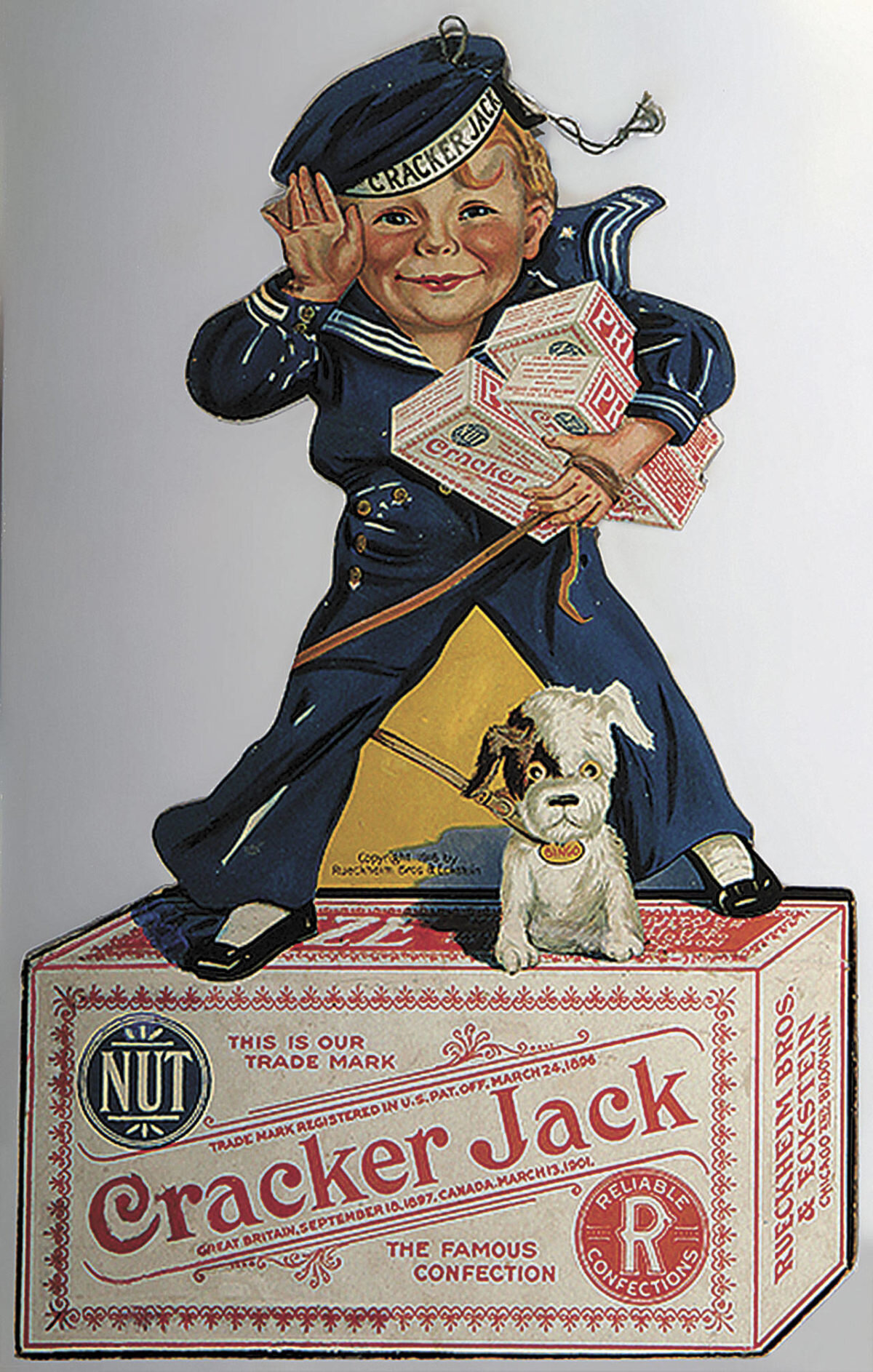28 July 2020 (Note added 29 July)
Crackerjack is perhaps best known today as a brand of candy, a mix of caramel-coated popcorn and peanuts.* But the word, denoting something that is exceptionally good, predates the brand. The word is, obviously a compound of cracker + jack, with the cracker referring to something that is good enough to boast about (see cracker). The jack is from the man’s name, which had become a generic reference to any person or a variety of devices, from a roasting spit to a mechanical lever. So, a crackerjack refers to something worth boasting about.
(* = Lynne Murphy points out my parochialism by noting that in the UK crackerjack is probably best known as the title of a children’s television programme, rather than the confection.)
Cracker Jack candy was first marketed in 1896, but the word dates to at least 1887 in horseracing circles. It appears in the Nashville Tennessean on 21 October 1887:
Lomasney Bros.’ siring of twelve race horses arrived at West Side Park yesterday, having come by express direct from Jerome Park, New York. Included in this stable are the “cracker jack” racers, Brown Duke, Little Minnie, Petticont, Climax, Longview, Cruiser and six others.
Two days later, on 23 October 1887, another Nashville paper, the Daily American, uses it in the context of the same racing event:
Fourteen carloads of horses in a solid special train left Memphis for Nashville last night, and will disembark at West Side Park at 8 o’clock this morning. They number more than one hundred “cracker jack” racers from the most celebrated stables in the Union.
The next year, cracker jack is used on the other side of the continent in reference to boxing. From the San Francisco Daily Examiner of 28 May 1888:
Godfrey is not likely to be long out of a pugilistic job. He has plenty of backers who think him a Cracker Jack good enough for anybody.
And it breaks out of the world of sports by 1899. A humor piece in the 20 February 1899 Daily American consisting of quotes purportedly from famous people has this to say, this one purportedly from the German Kaiser:
Methinks old Bismarck is too antediluvian to advise a cracker-jack like me.—William II.
Of course, crackerjack will be forever associated with baseball because of the 1908 song “Take Me Out to the Ball Game” by Jack Norworth and Albert von Tilzer. But the word was in baseball slang long before the song, and even before the candy existed.
The earliest association I have found of crackerjack to baseball is an oblique one. It actually is in the context of the sport of handball, but features a famous baseball player, catcher Albert J. “Doc” Bushong. This item is syndicated in a number of papers, but here is the version in the Montreal Gazette of 26 March 1890:
Doc Bushong is becoming quite a handball expert. He is being coached by William Courtney at the South Brooklyn court, and the celebrated expert says that Bushong will make a “Cracker Jack” at the game in a very short while.
The next week, the Cincinnati Enquirer of 2 April 1890 used the word in an article about baseball proper:
Keenan is a “cracker jack” at first base. It takes a very bad throw to get away from Jim.
And the next month, the Cincinnati Enquirer of 25 May 1890 used cracker jack as an adjective:
Anson gives it out as sure that he will have a “Cracker Jack” second-baseman before the world is many days older. Where is he going to get him?
The compound loses its space and closes to a single word by 1891. A San Francisco Chronicle article of 11 April 1891 might be the first to demonstrate the single word, but it is hyphenated at a line break, so it’s impossible to tell if the word itself was meant to be hyphenated:
One of the two-year-olds, Yo Tambien, by Joe Hooker, dam Marion, by Malcolm, is attracting considerable attention on account of her breeding, being a half-sister to the cracker-[?]jacks, Emperor of Norfolk, the Czar and El Rio Rey.
But five days later, the 16 April 1891 St. Louis Post-Dispatch uses the closed compound unambiguously:
The Australian is willing to meet any one, but the California club thinks his record justified him only in meeting a crackerjack.
Sources:
“Amongst the Flyers.” Nashville Tennessean, 21 October 1887, 3. ProQuest Historical Newspapers.
“Australian Fighters.” St. Louis Post-Dispatch, 16 April 1891, 11. ProQuest Historical Newspapers.
“Base-Ball: Brotherhood Meeting This Afternoon.” Cincinnati Enquirer, 2 April 1890. ProQuest Historical Newspapers.
“Base-Ball Notes.” Cincinnati Enquirer, 25 May 1890, 11. ProQuest Historical Newspapers.
“By Grapevine.” Daily American (Nashville), 20 February 1899, 2. ProQuest Historical Newspapers.
“International Leaguers.” The Gazette (Montreal), 26 March 1890, 8. ProQuest Historical Newspapers.
Oxford English Dictionary, second edition, 1989, s.v. crackerjack, n. and adj.
“Sporting.” Daily Examiner (San Francisco), 28 May 1888, 3. ProQuest Historical Newspapers.
“They Have Come.” Daily American (Nashville), 23 October 1887, 3. ProQuest Historical Newspapers.
“Troubled Turfmen.” San Francisco Chronicle, 11 April 1891, 10. ProQuest Historical Newspapers.
Image credit: Herald.net.

